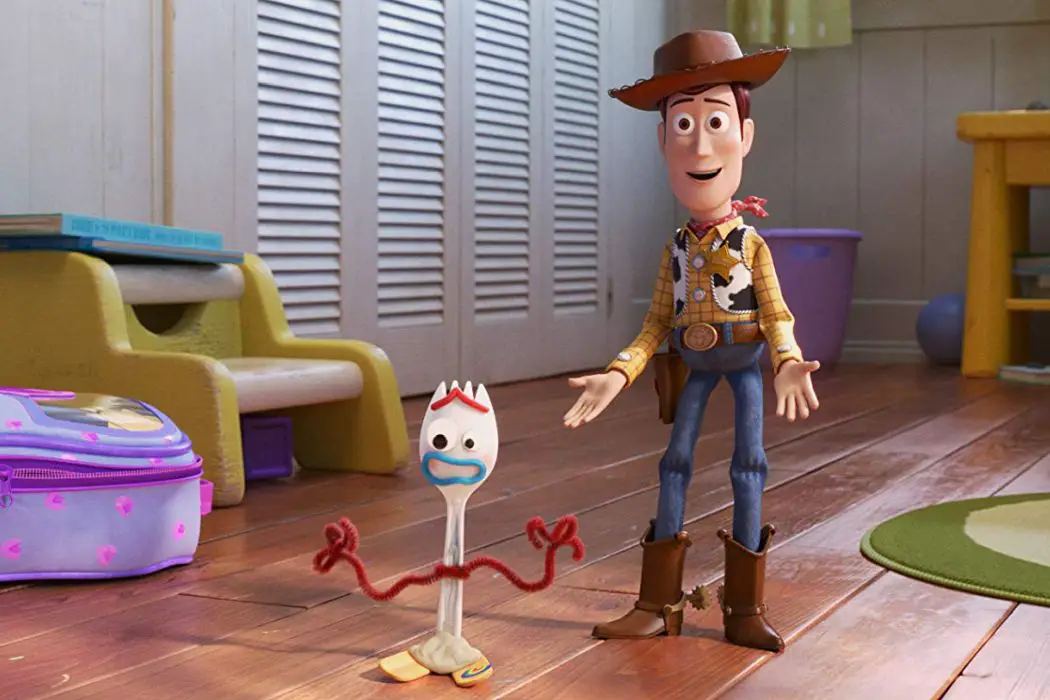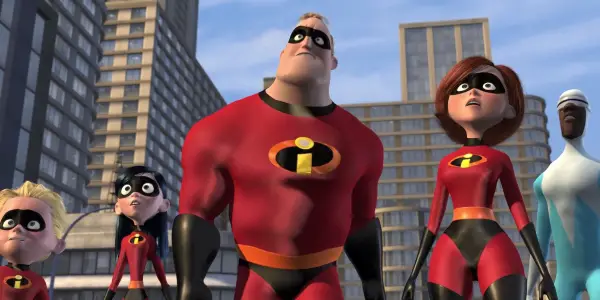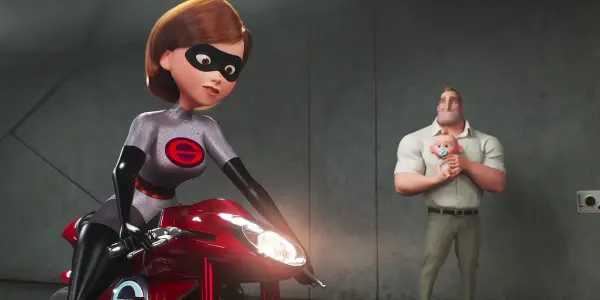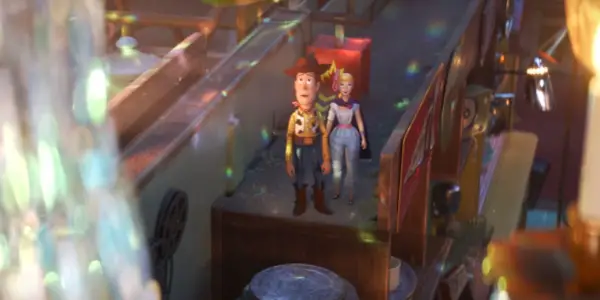The Era Of Underwhelming Pixar Sequels: TOY STORY 4 vs. INCREDIBLES 2

Currently working on his Bachelor's in Media Arts with a…
Toy Story 4 has as big a cast of characters as Incredibles 2, but with the distinct advantage in knowing what story it wants to tell, and to whom the story belongs. In doing so, we look back on the very barebones basics of not only what made Pixar’s movies so great, but any movie you still remember all these years later.
Every classic, timeless movie – whether it’s science fiction or romantic comedy – has a great protagonist. And that protagonist is only as great as the story they’re in. And the truth is that great story they’re in only exists to service their character’s journey in discovering something about themselves that makes them better off than they were before.
It’s screenwriting basics. The protagonist should always be the focus of your story. Always. Every scene in your novel, short story, newspaper article, TV show, or film – if it doesn’t have anything to do with progressing your protagonist’s character arc or move the story (which always ultimately boils down to just a metaphor for your protagonist’s internal journey in the end) forward, then it shouldn’t be included.
Cut it. Scratch it out. Highlight the paragraph, delete it and don’t look back. It’s that simple and that difficult. A character-driven story without a strong protagonist with a satisfying arc will almost always fail. And plot-driven story without a strong protagonist with a satisfying arc will make money beyond anything you can imagine if done right, but will be forgotten within a year.
The whole idea behind this sentiment was practically defined by some of Pixar’s best works – and, strangely enough, it’s from that same studio whose works are some of the most serious offenders. Although I could pit something as character-focused as Finding Nemo against something that’s decidedly not like Cars 2, I thought it fitting that I’d pull examples from the studios two most recent releases that work just as well.
These, presented to you now, are the disappointingly passable, ultimately forgettable Incredibles 2, and the surprisingly necessary, nearly perfect Toy Story 4.
What Not To Do, Or: How Pixar Revives Characters From the Grave For Nostalgic Profit, If Nothing Else
In the first Incredibles, we’re given a great character arc from not only our protagonist, but many of the supporting cast as well. This is always a tricky tight-rope walk to pull off, but Brad Bird does it beautifully. His sure hand at storytelling craftsmanship kicks into full gear here, allowing each character to have time to learn by the end of the movie, but does so without getting off track from the protagonist at the center of it all: Mr. Incredible AKA Bob Parr.
While the concept of a family of superheroes is enough to make for a pretty great film, the backbone of it all that makes a truly timeless and endlessly re-watchable film is the fact that no scene feels wasted – everything in the movie has, in some way or another, to do with Bob’s progression in his arc to becoming a more present family-man and contributes to him learning that he’s not alone in the crime-fighting world.

In Incredibles 2, we see the same writer/director try to balance what feels like two separate protagonists in Bob and Helen Parr, each with their own arcs, who seem to fight for screen time as we intercut between their two isolated narratives. One of them involves Helen in what is most obviously the main story, doing the same kinds of things and going through the same motions as Bob did in the 2004 original in doing solo superhero work at the expense of her attentiveness to her family life.
They even go so far as to include a line she says to herself saying, “I’m such a hypocrite,” when she brings up the fact that this was exactly what she tried so hard to get her husband to learn from in the first movie. Overall it comes off as cheap to try and recycle an old, already-resolved character arc from the first movie – especially given the fact that the events of Incredibles 2 take place literally seconds after the first one’s end.

While this is going on, Bob is left at home to take care of the kids, a great direction to go in for his character, admittedly, following his recent transition into the attentive father role. Though this storyline of him being the stay-at-home dad makes the complications any story eventually has to face things like him struggling with Dash’s math homework, consoling and connecting with Violet and her teenage troubles, and even going so far as to having Bob start to grow jealous of his wife’s newfound superhero work and wrestling with the desire to be the one to shine in the spotlight again.
These scenes are fun to watch, but don’t go anywhere in the end. They end up feeling like filler; snippets of comedy or drama that don’t go anywhere outside their respective scenes and never come back in any meaningful way. Really, they just come off as extraneous; like loose ends meant to be cut. The end result of it all is a movie that feels like it struggles to find a strong protagonist with an engaging character arc to focus the scenes of the narrative on and carry us through the course of the movie.
What To Do, Or: How Pixar Proved They Still Remember How To Make A Pixar Movie Again
After the disappointment of Incredibles 2, and after already being skeptical of Pixar’s continued critical acclaim for movies with crucial, unrecognized flaws in writing (looking at you, Finding Dory and Coco), I made it a point with everyone in my family and friends that I would flat-out just stop watching their movies, starting with Toy Story 4.
The sound bite I’d use with everyone that asked about this stance I was making was that Pixar has proven again and again that they have perfected the careful art of original and tightly-crafted storytelling, and I will hold them to that standard until the day I die. I would not accept passable, decent-enough entertainment. The movie’s release came and went, and mostly I kept to my word. I even looked up a detailed summary of the movie’s ending as a kind of nail on the coffin of any subconscious desire I still had for seeing it.
Though after months and months of this continued pettiness, I eventually came to a compromise. I justified it by saying I should have means of credibility to my argument after many people told me I couldn’t presume anything until I actually saw it. So around late August, after a day’s worth of mental deliberation, I unceremoniously gave in and saw Toy Story 4. I went so far as to use a free pass I got from the theater to buy my ticket thinking if I didn’t give them my money, I still somehow kept the satisfaction of having won.
Two hours or so later and I left the theater. Good doesn’t even begin to describe this movie.

Maybe it was because all my expectations from Pixar had been drained by hardened cynicism over the past few years. Maybe I’d lost all hope that they still knew what made their movies so timeless and memorable to begin with. But I watched Toy Story 4, and left the theater smiling like a little kid. For the first time in years, Pixar surprised me.
I watched it again a few weeks later, as a paying customer, and came to the conclusion that it wasn’t just from a complete lack of expectations that this movie shined the brightest. The director Josh Cooley and the rest of the team behind this knew what made past movies from their studio so great, and turned this fourth iteration into a full-fledged character drama – and one of the best they’ve done, at that.
Everything that happens over the course of the movie is focused and in service to one single emotional core – and that’s Woody and his journey towards finding what he truly wants. Everything from rescuing Forky from a doll with a misguided quest, to the supporting cast of toys and their misadventures in carjacking. The reason all of that is included in the film and not abandoned like a lost toy on the cutting room floor is precisely because those seemingly irrelevant to Woody stories resolve themselves at the end in an emotionally satisfying way with the cowboy himself.
His confrontation with the film’s antagonist, Gabby Gabby, is resolved when he helps her find a kid of her own, allowing Woody to come to the realization that helping lost toys find their kids is exactly what was missing from his life. And the whole side story of Woody helping this philosophical paradox of a suddenly sentient spork get back to Bonnie resolves with Woody coming terms with the fact that Bonnie doesn’t need him. He gets a kind of catharsis after worrying the kid he belonged to would miss him, and is content with the fact that she won’t.
It’s a sad, but bittersweet resolution for his character that wouldn’t nearly be as strong or impactful if it weren’t for the decisions made to keep or not keep certain scenes in the movie. So thank you to Toy Story 4 for restoring my faith in the studio again. And, for the first time in years, I can’t wait what they have in store next.
Incredibles 2 & Toy Story 4: Knockout Round
In Incredibles 2, we have what is likely Helen as our main protagonist, but the filmmakers seem to make an argument for Bob as well. The former faces the same internal struggle her husband faced in the previous film, set not seconds before this one, debating whether or not to swallow her pride and accept the possibility that the rest of her family can help. In Toy Story 4, we’re very much set on Woody from the get-go, and in the very opening scene the filmmakers plant the seeds in his mind of where his true place lies – fiercely and unflinchingly loyal to his kid, no matter if the feeling is reciprocated the same way as it was with Andy; or finding what more to life exists beyond just being played with by your kid.
Each movie commits to these protagonists and their respective arcs, but only one comes out on top as a clear winner in the end. Toy Story 4 ultimately has the advantage of having a protagonist with an arc that explores new and exciting territory, and commits the entirety of its film’s plot to get to that point with its character. While Incredibles 2 somewhat focuses on its protagonist’s journey with Helen, it indulges in extraneous scenes that, under the careful scrutiny for story that Pixar is normally known for and would usually cut, litter the bloated film’s runtime nevertheless.
When looking at the two most recent of Pixar’s streak of underwhelming sequels, both unquestionably fueled on the nostalgia of its now-grown paying audience, there’s only one clear winner in this fight – and that’s Toy Story 4 with a knock-out.
What do you think about Pixar’s recent releases? Any favorites? Least Favorite? Let us know in the comments below!
Does content like this matter to you?
Become a Member and support film journalism. Unlock access to all of Film Inquiry`s great articles. Join a community of like-minded readers who are passionate about cinema - get access to our private members Network, give back to independent filmmakers, and more.
Currently working on his Bachelor's in Media Arts with a Minor in English, William's movie taste consists of a sad overindulgence in anything Charlie Kaufman, Pre-2011 Pixar, or the works of The Holy David Trinity (Lynch, Lean, & Fincher). He also would like to add that any queries you may have regarding the latest in roller coasters, why 3d Blu-ray gets a bad rap, or the importance of music in movies and musical theatre should be directed to him.












